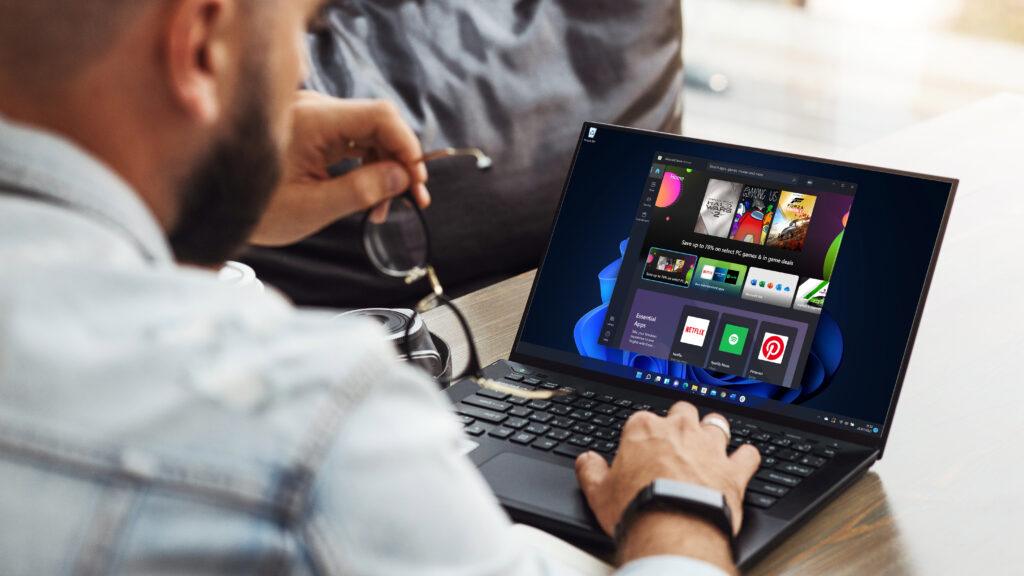- Microsoft has given us more details of how PC-to-PC migration works
- It will offer a useful alternative to those who do not want to recover a backup via OneDrive
- However, the feature still has warnings, including having a Microsoft account -nor will it not support arm -based PCs, nor will it
Microsoft has provided more details about how its PC-to-PC migration feature actually works when it comes to switching to a new Windows 11 PC.
The feature is designed to smooth over the upgrade to a new PC and make it as easy as possible – albeit with some warnings – and clearly the focus is on helping Windows 10 users switch to Windows 11 (provided their hardware supports the latter us).
Previously, PC-to-PC migration has been seen in testing, and Microsoft has set the shell of the experience in the release version of Windows 11 (with the latest update)-It is not yet functional.
At least we now know exactly how ability will work thanks to a support post Microsoft has uploaded (which Thurrott.com discovered). So let’s dive into all the most important details you need to know.
The old PC and new PC you transfer to must be on the same network, either connected via Ethernet (cable, to your router) or wireless (on the same Wi-Fi network).
Both machines must also be signed in a Microsoft account – so with the new PC you have to log into an account during the setup. Once this initial setup is run, you can start PC-to-PC migration, which pairs the PCs using a one-time code.
Then you will have to choose what you want to transfer in the way of files or settings. You can transfer almost anything with regard to files and the settings you have selected in Windows, including personalized elements on the desktop (backgrounds or themes), but there are a few exceptions.
What will not be transferred across include temporary and system files (which you do not want anyway), as well as the apps installed on the old PC and saved passwords (though you may get them stored in your browser, anyway).
Once you have selected the data and settings to be transferred across, the process begins, giving you a timer as an indication of how long you wait (hopefully an exact one – these countdowns are not always so reliable).
If the network connection is to fall somehow, Microsoft says Windows will automatically try to resume the data transfer when back – even if you can manually restart the process if all else fails.
Analysis: Backup or Migration
The PC-to-PC migration feature is essentially an alternative for those who have not configured a backup (stored for OneDrive) via the Windows Backup app. If you have one of them, you can simply implement that backup on the new PC-if you can’t use PC-to-PC migration instead (as a local data transfer method, but you still need to be signed in a Microsoft account as mentioned). Or at least you will be able to be fully released to Windows 11 (and 10) PCs, which will happen soon enough – I bet Microsoft will have this going before Windows 10 reaches the end of life (for obvious reasons).
It is worth noting that if you configure a backup on the Windows Backup app – just to sync your device settings, in fact – you will get an extra year of support for Windows 10 (to avoid the $ 30 fee that Microsoft had previously turned on this option).
Så backup er helt klart en app, som Microsoft ønsker, at folk skal bruge-og jeg kan se, at valget er en populær stopgap-foranstaltning for at udsætte enhver beslutning om at opgradere til Windows 11 indtil næste år-men det er godt at se, at pc-to-PC-migration tilbydes som en anden måde fremad, med færre strenge vedhæftet (Onedrive-Wise, selvom du stadig skal bruge en Microsoft account).
With PC-to-PC migration, the most important thing you are not transferred to the new PC, your apps, is not surprising. In fact, the backup app does not deliver your apps when it restore a backup – although it can restore apps from Microsoft Store and with third -party apps, you give a link to download them for convenience (you will not get that ability with the new migration feature).
The biggest difference with the new feature is therefore that migration does not require or use OneDrive (although it needs a Microsoft account) and there are no options related to keeping your apps (although using Windows security copy is also limited in that regard).
Some other notable warnings with PC-to-PC migration are that it does not work with drives encrypted with Bitlocker (they must first be decrypted) and that devices with arm CPUs are not supported (yet). Given that Microsoft says Arm -PCs are not “at the moment” have been taken into account, I expect it to change fast enough – especially as these represent a fair part of Copilot+ PCS, which is the machines Microsoft is busy trying to get everyone to buy.
As noted, we are still waiting for the full PC-to-PC migration experience to be activated in Windows 11 (and Windows 10), but it shouldn’t be too long before this happens.



